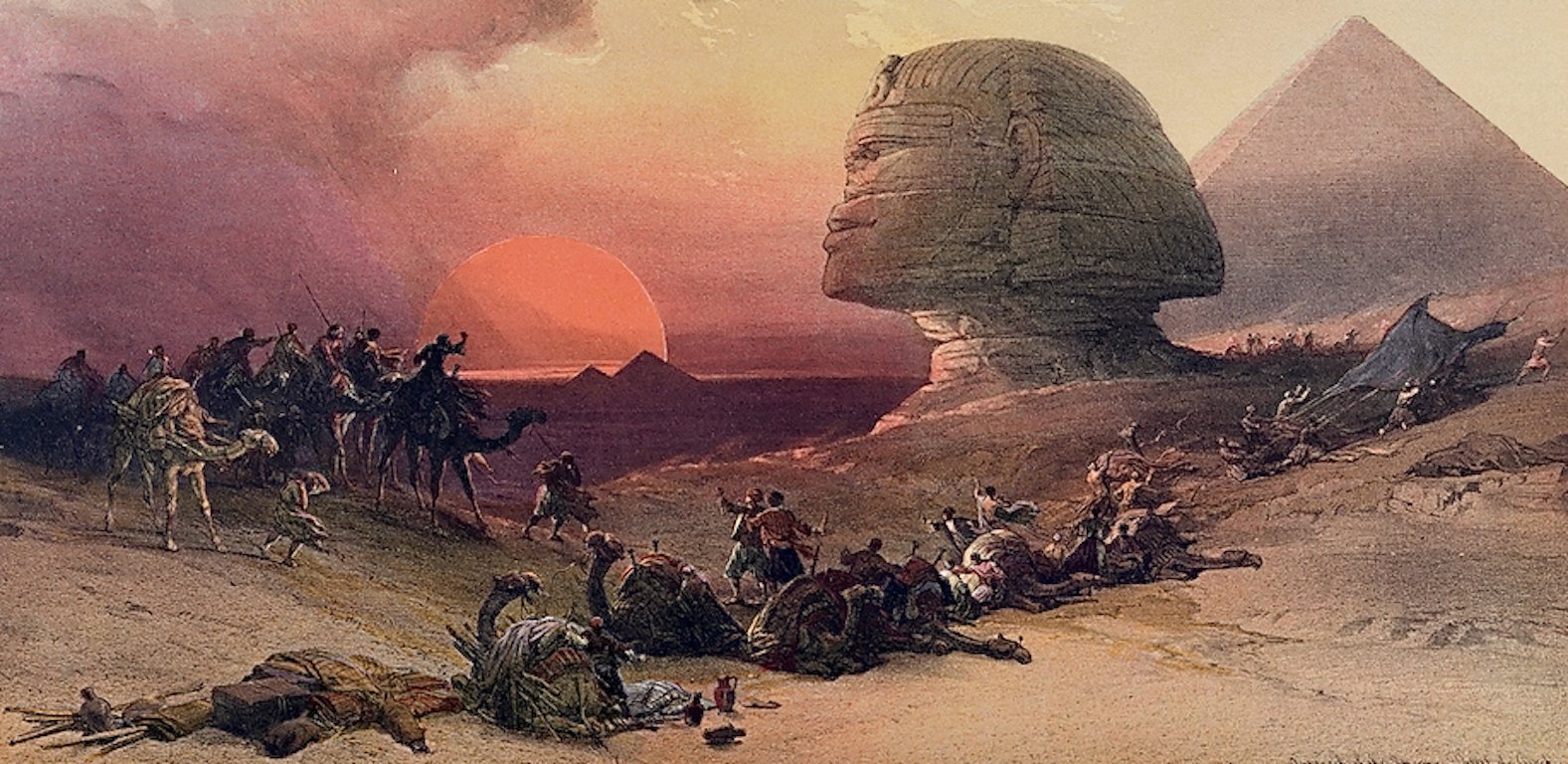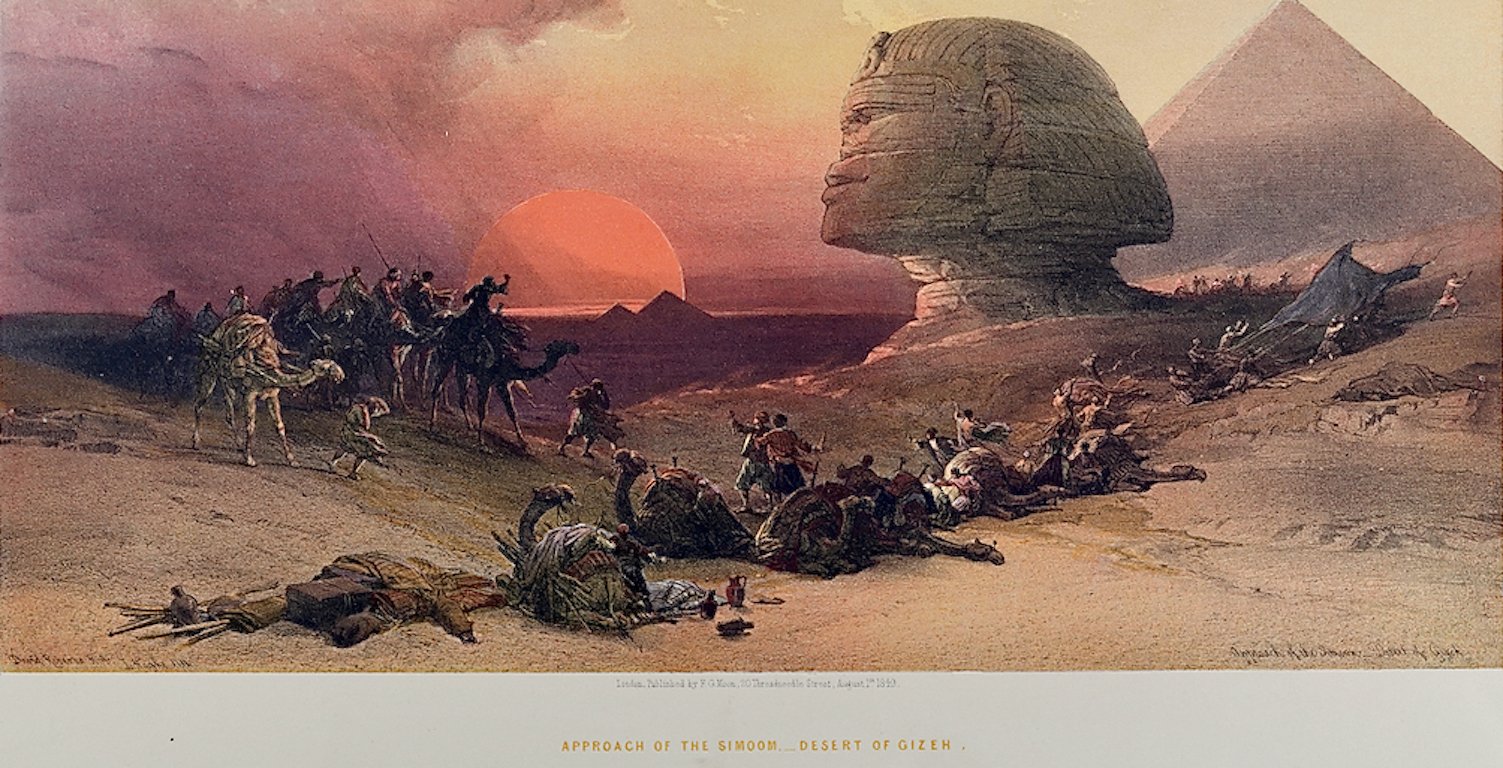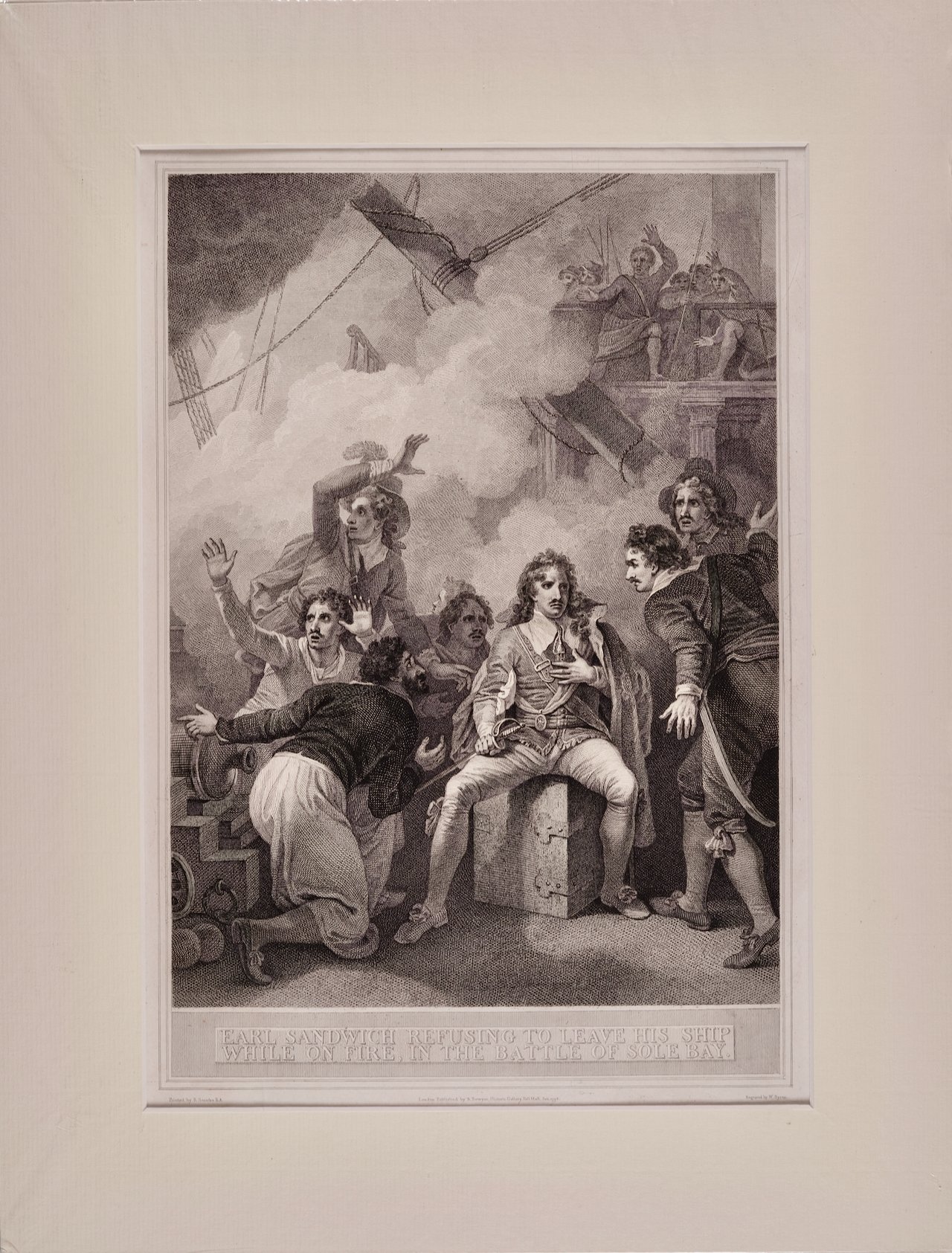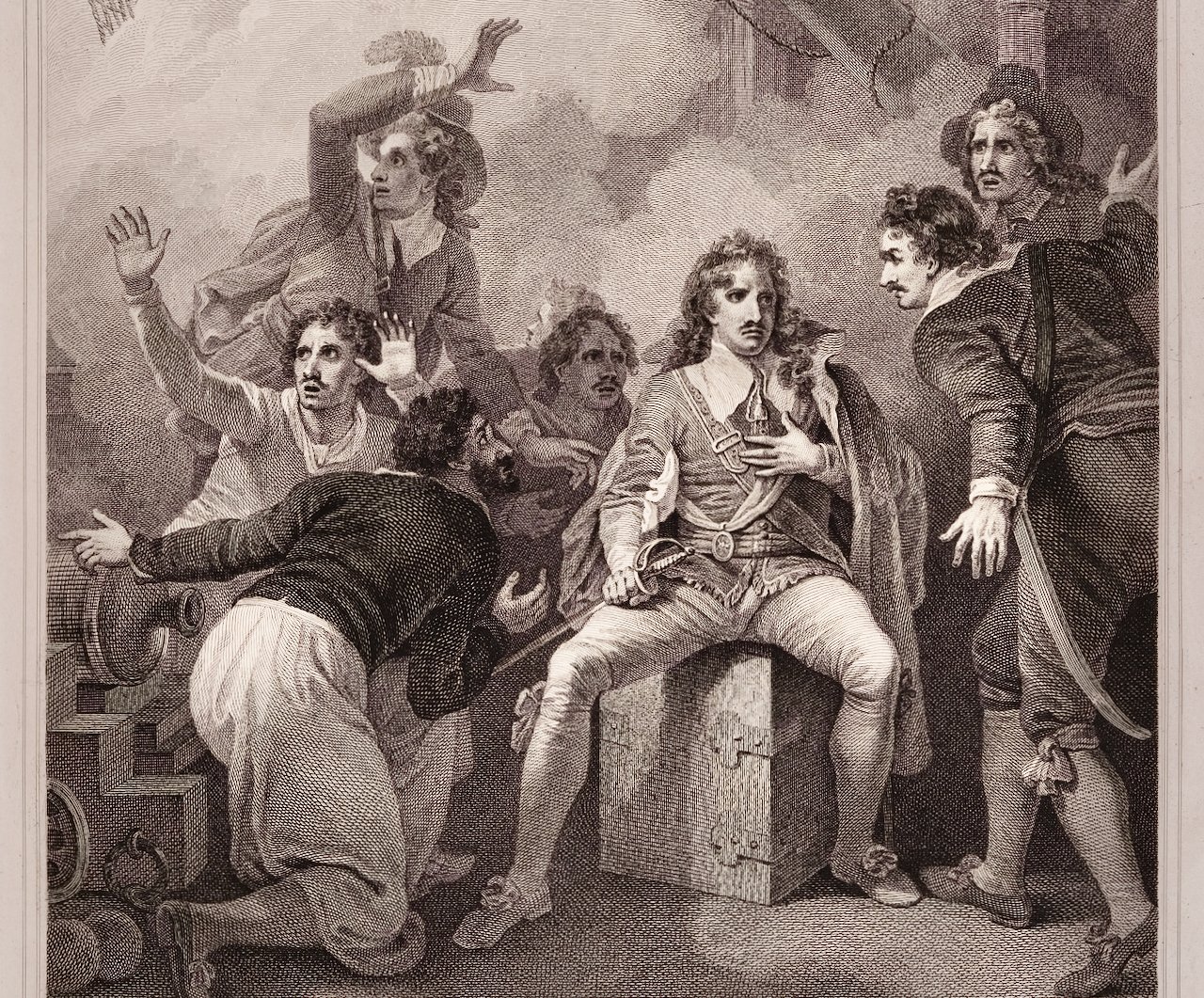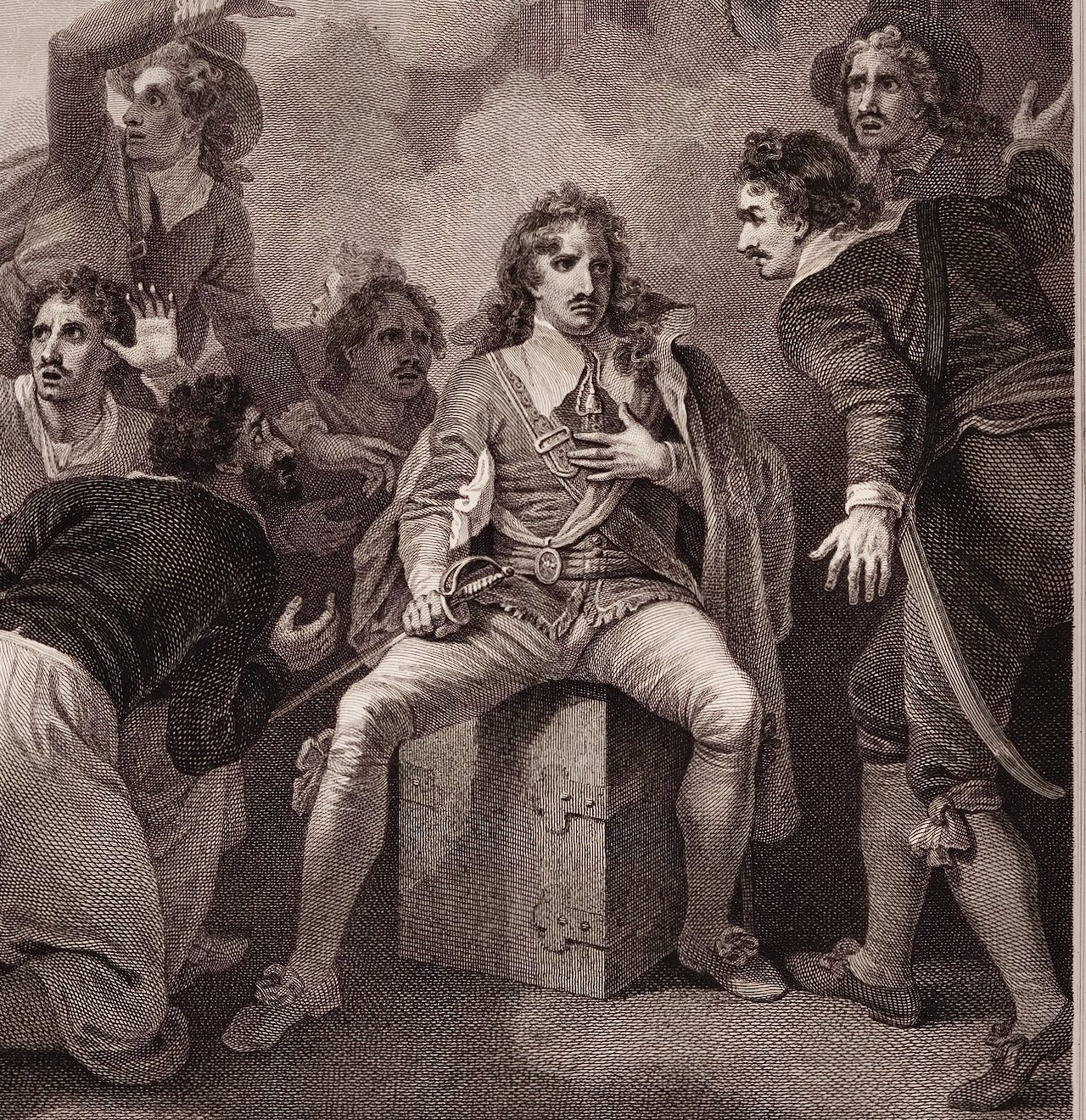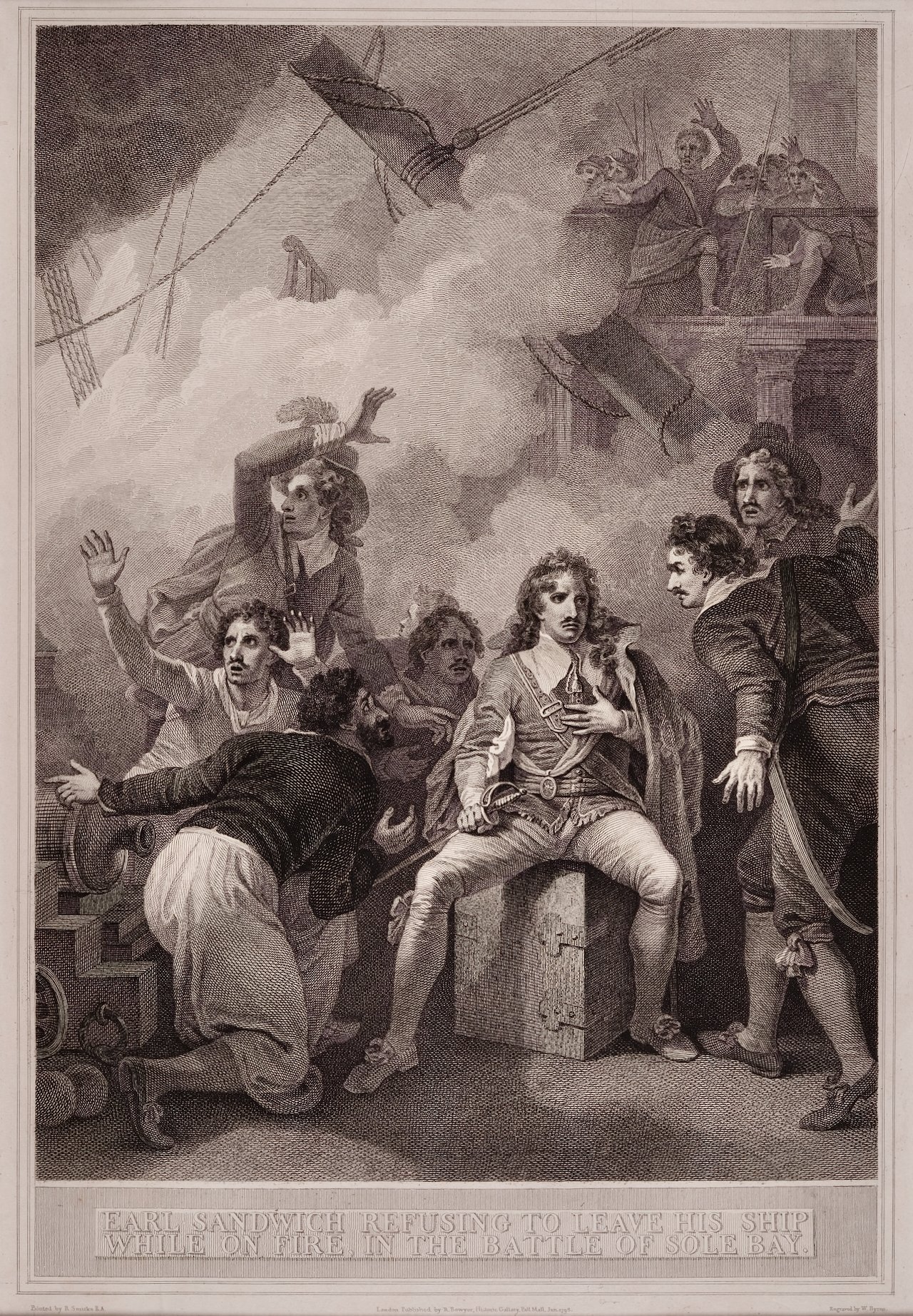The print is presented in a brown wood frame with a black edge and a cream-colored mat. The frame measures 13.63" x 17.63" x 1.25". The title of the lithograph and the date of Roberts' visit to the site (March 29, 1839) is printed in cursive in the lower left and David Roberts' name appears in the lower right, again in cursive. There is a tiny spot in the left margin, but the print is otherwise in excellent condition.
David Roberts (1796-1864) was born outside of Edinburgh, Scotland. At age 10 he became a house painter’s apprentice. He continued painting houses and eventually theater scenes in Edinburgh and then in London. His friend, J. M. W. Turner, recognized his artistic talent and encouraged him to become a full-time artist.
In 1839 Roberts traveled to Egypt and then in 1840, through the Holy Land, concluding in Jerusalem. Upon his return to England, F. G. Moon agreed to publish lithographs created by Louis Haghe from Robert’s sketches and watercolors. This publication was highly acclaimed and very popular for its esthetic quality, its historical and topographical accuracy, and Robert’s dramatic depiction of his scenes. Queen Victoria and Charles Dickens were among the subscribers who collected his works. Roberts' and Haghe’s duotone lithographs, often colored, remain extremely sought-after today and have been rising steadily in value.












